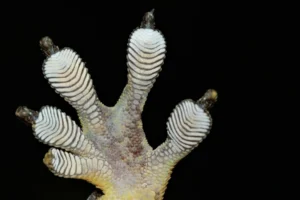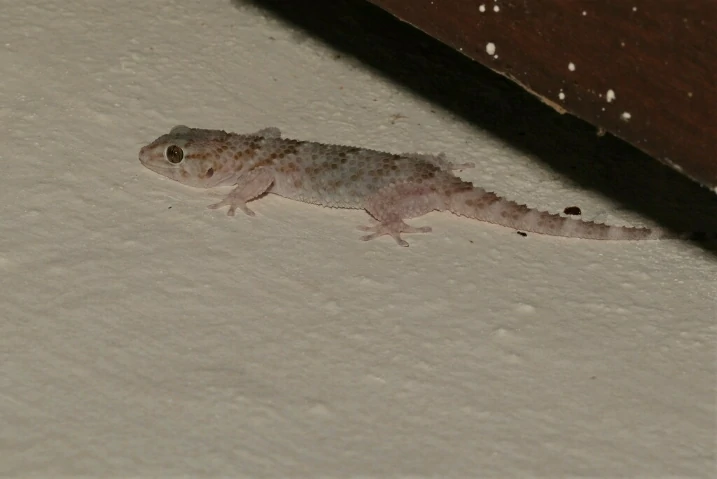If you’ve ever seen a lizard suddenly dash across your bathroom floor, your first thought is probably, “Where did that come from?”
You might check the windows, the door, even tiny cracks in the walls, but everything looks closed up. Then your eyes land on the drain, and you start wondering if that’s how it got in. Can lizards really climb up drains?
Yes, some lizards can climb up drains, but it’s not as common as you might think. Most lizards can’t make it all the way through the narrow, slippery, and often wet pipes. However, smaller, agile species (especially geckos and house lizards) sometimes manage to crawl through drain openings or plumbing gaps when the conditions are right.
Drains aren’t their favorite path, but they can act like hidden doors, especially in warm, humid homes where insects are everywhere.
How Lizards End Up in Bathrooms and Kitchens
Most lizards don’t plan to sneak into your house through the pipes. Usually, it’s simpler: they follow food and shelter.
If your bathroom or kitchen has drain flies, cockroaches, or other insects, that’s basically a buffet for a hungry gecko.

They might slip in through a small crack near the pipe, a tiny opening around the drain, or even through the overflow holes in sinks or tubs.
Once inside, they often get stuck or wander around confused until you see them.
So even though the idea of a lizard crawling up from your drain sounds creepy, it’s usually just a confused little creature that found a way in through a loose fitting or gap, not through the whole drainage system.
Can Lizards Actually Climb Smooth, Slippery Surfaces?
Here’s the real question: can a lizard actually climb up a drainpipe?
It really depends on the species and what the inside of the drain is like.
Geckos have a huge advantage. They have tiny hair-like structures on their toes called setae. These let them stick to almost any surface.

That’s why you’ll see geckos walking upside down on smooth tiles without falling.
But a wet, slimy, vertical drain is a different story. The inside is usually smooth, damp, and covered with a thin layer of gunk. That makes it really hard for most lizards to get a grip, even with sticky toes.
Some drains are different though. Older houses or outdoor plumbing sometimes have rougher pipes or tiny cracks that lizards can hold onto.
They might move slowly, resting in between, using the rough spots to keep their balance.
So while it’s not impossible, it’s pretty rare; and usually only happens in smaller pipes with a bit of texture, not slick plastic or metal.
Which Lizards Are Most Likely to Try?
If a lizard is going to try climbing a drain, it’s usually a smaller, curious type that lives near people.
The most common ones are house geckos. Those little gray or pale brown lizards you see on walls at night near lights, waiting for bugs. They’re small, quick, and used to squeezing through tight spots.
Skinks, especially young or small ones, might also try. Skinks mostly live on the ground, but sometimes they explore strange openings while chasing insects or looking for water.
Big lizards like iguanas, monitors, or bearded dragons don’t have a chance. They’re too large to fit in narrow pipes or climb slippery walls.
So if you see a lizard in your sink or tub, it’s almost always a gecko or a similar small species.
Why Lizards Might Try to Enter Through Drains
Lizards don’t go into drains just for fun. They usually have a reason. The main ones are food, warmth, and moisture.
Drains can give all three, especially in warm areas:
-
Food: Drains attract tiny insects like cockroaches, drain flies, and ants. Lizards are hunters, they’ll go wherever the food is.
-
Warmth: Indoor plumbing stays warmer than the outside air in cooler weather. A lizard looking for a cozy spot might follow the warmth through a crack near the pipes.
-
Moisture: Lizards need humidity. Bathrooms and kitchens are naturally humid, so they’re perfect.
So if a lizard slips in through a plumbing gap, it’s just following its needs, not trying to invade your home.
Do Lizards Actually Come Through the Water?
A lot of people worry that lizards might swim up through the water in drains or toilets. That’s mostly not true.
Most lizards can’t hold their breath long enough to swim through flooded pipes. Plus, plumbing has tight bends and water traps, like the U-shaped P-trap under sinks.

These block smells, and also make it almost impossible for small animals to get through.
If a lizard shows up in your sink, tub, or toilet, it almost always came from the top, through a crack or open drain cover, not by swimming up from below.
Most lizards avoid water unless they really have to.
Some semi-aquatic lizards, like water monitors, are good swimmers and can travel through large outdoor drains.
But those don’t live inside homes, and they’re way too big for indoor pipes anyway.
What’s More Likely: Gaps Around Pipes
It’s much more common for a lizard to come in through small gaps around pipes than through the drain itself.
In lots of homes, there’s a tiny space where a pipe passes through a wall or floor. That gap can be just big enough for geckos or skinks to squeeze through.
They often end up inside the walls, which is why lizards sometimes show up near sinks, tubs, or under cabinets, even if the drain looks sealed.
These entry points are usually dry, dark, and easy to walk through, unlike the wet inside of a drain. If the area behind your sink or tub is humid and full of insects, it’s basically a little paradise for lizards.
So when people see a lizard near a drain, they often think it came from the drain, but it probably came around it instead.
Can Lizards Get Stuck in Drains?
Yes, and that happens more often than you’d think. A curious lizard might chase a bug into a drain opening and then realize it can’t climb back out because the walls are too smooth.
Once inside, they can get stuck in a curve or at the bottom of the sink. You might even see one floating in standing water.
If that happens, it’s usually not because it climbed up through the drain, but because it fell in from the top. Smooth vertical surfaces like sinks and tubs are almost impossible for them to climb once they’re in.
If you find a live lizard in your sink, you can gently help it out with a small towel, piece of cardboard, or plastic container. Then release it outside in a shady spot. These little guys aren’t dangerous, they’re just lost.
Are Lizards Dangerous if They Come Through Drains?
Not really. House lizards and geckos are harmless. They don’t have venom, they don’t bite unless scared, and they don’t spread diseases like rats do.
They can even help you out by eating cockroaches, ants, mosquitoes, and flies; basically free pest control.
Still, it’s normal to be startled if one pops up in your bathroom. They move fast and appear suddenly, which can freak you out.
But don’t worry, a lizard in your bathroom isn’t trying to hurt you. It’s just scared and trying to find a way out.
How to Keep Lizards Out of Your Drains and Pipes
If you want to stop lizards from sneaking in through drains or gaps, here’s what to do:
-
Use drain covers or strainers: These cover sink and shower drains so lizards can’t slip through.
-
Seal gaps around pipes: Use silicone or caulk to close openings where pipes enter walls or floors.
-
Fix leaky pipes: Leaks attract insects, which in turn attract lizards.
-
Keep lights off near open windows at night: Lights attract insects, and insects attract lizards.
-
Clean drains regularly: Getting rid of debris and bugs removes the main reason lizards hang around: food.
These simple steps make it much harder for lizards to get in.
Conclusion
Lizards are curious little creatures that can squeeze into surprisingly small spaces, but drains aren’t their favorite way in.
A tiny gecko might crawl through a dry, textured pipe, but it’s much more likely it found another path nearby.
The good news is, lizards in your home are harmless, and often helpful. They don’t want to live in your sink; they just want the insects that live there.
By sealing gaps, keeping drains covered, and cutting down on indoor insects, you can keep your pipes lizard-free and let these little hunters stay outside where they belong.
Hi, my name is Ezra Mushala, i have been interested animals all my life. I am the main author and editor here at snakeinformer.com.

